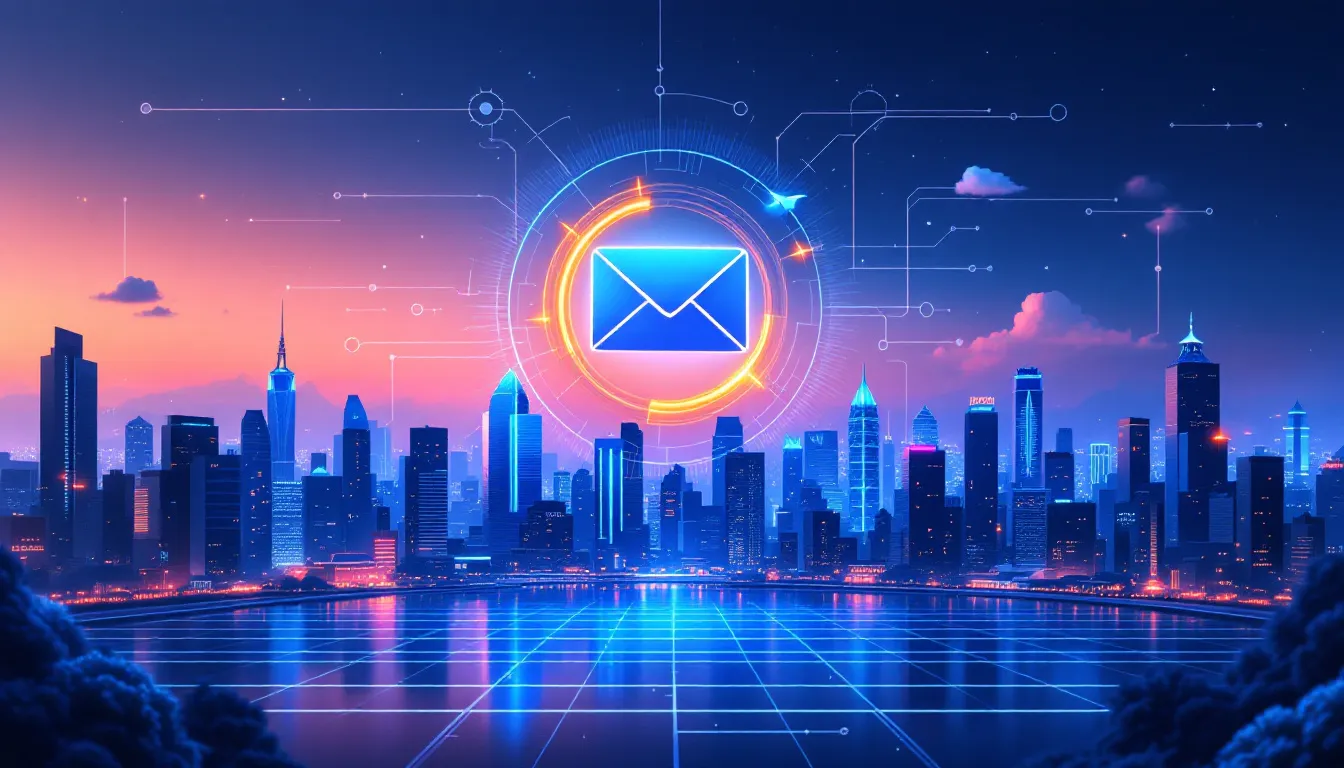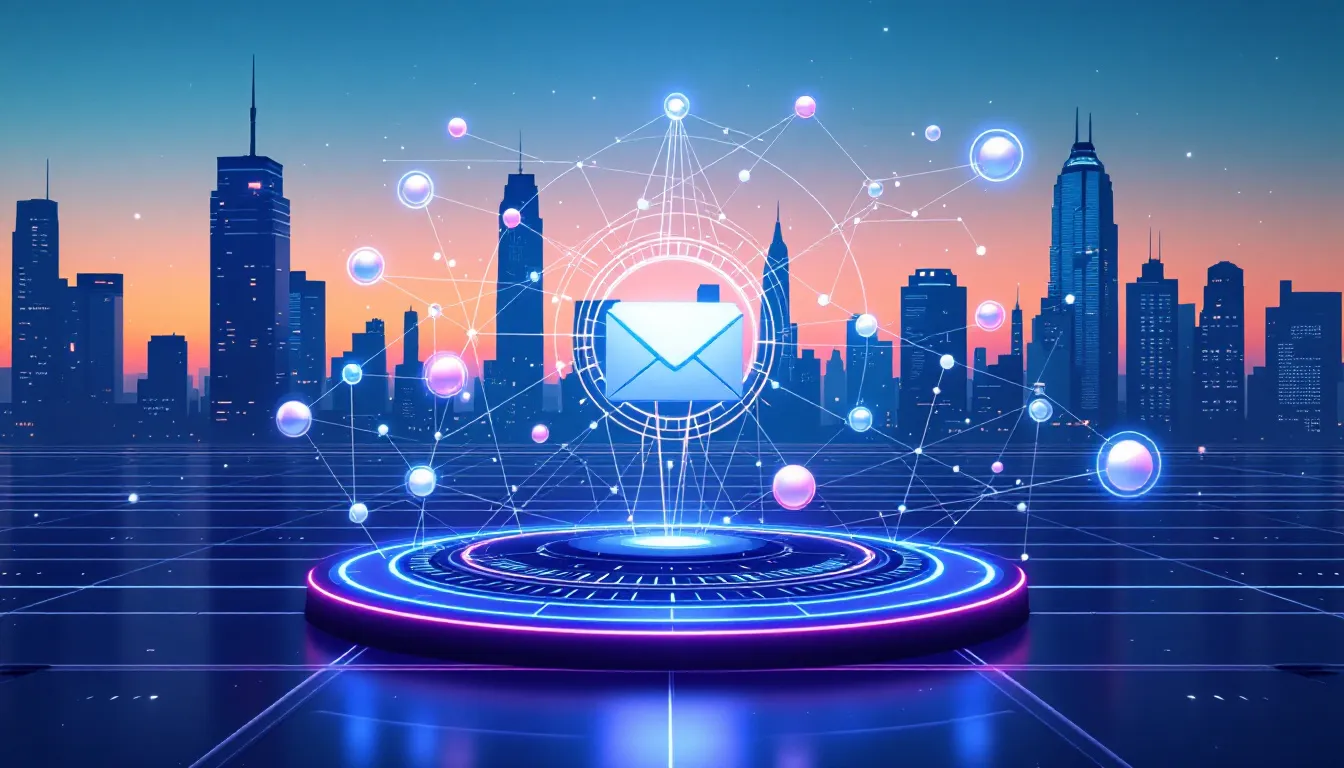Email marketing automation is a powerful tool for streamlining customer engagement. By automating personalized emails, businesses can improve efficiency and maintain meaningful connections with their audience through email marketing automation streamlining customer engagement. This article explores how to harness email marketing automation to enhance customer interactions and drive better results.
Key Takeaways
- Email marketing automation enhances efficiency by allowing bulk messaging and personalization, significantly improving customer engagement and conversion rates.
- Automated workflows, including welcome and re-engagement emails, are essential for guiding customers through their journey and nurturing leads effectively.
- Leveraging customer data for segmentation and dynamic content personalization is crucial for tailoring communications, enhancing relevance, and driving better engagement.
The Power of Email Marketing Automation

Email marketing automation is a cornerstone of modern marketing strategies, significantly influencing how businesses connect with their audiences today. At its core, it increases workflow efficiency by allowing marketers to send bulk messages instead of individual ones, saving time and reducing operational costs. This marketing automation software not only streamlines communication but also personalizes interactions, making each customer feel valued. Imagine the ability to send a birthday greeting, a timely reminder about an abandoned cart, or a special offer for a loyal customer—all without lifting a finger.
One of the primary benefits of marketing automation is its ability to minimize errors in email campaigns by standardizing the message delivery process. This ensures that every email sent meets the brand’s quality standards, enhancing the overall customer experience. Furthermore, it allows businesses to respond to user behavior dynamically. For example, if a customer browses a product but doesn’t make a purchase, an automated email can be triggered to offer a discount, making the communication timely and relevant.
Successful email automation also significantly enhances customer engagement and improves conversion rates. By providing value through cost savings, new products, services, and benefits, effective email campaigns keep customers engaged and interested in what your brand has to offer. This improved engagement leads to better product awareness and ultimately, higher sales.
In essence, marketing automation helps businesses streamline workflows and utilize data to enhance communication. The focus isn’t merely on sending messages but on delivering the right messages at the right times to the right people. This kind of strategic, data-driven approach is what makes marketing automation a popular marketing tool in the digital age.
Creating Automated Workflows for Customer Engagement
Automated workflows are the backbone of effective email marketing campaigns. These workflows can include everything from welcome emails and transactional emails to abandoned cart reminders and re-engagement emails. The key to success lies in thoughtful customer journey integration, ensuring that each interaction feels natural and engaging.
Tools like Klaviyo offer pre built templates that can prevent lost sales, nurture subscribers, and encourage repeat purchases. The following subsections will delve into specific types of automated emails and how they can be used to enhance customer engagement.
Welcome Emails that Delight
Welcome emails play a crucial role in email marketing automation. They introduce the brand and set the tone for all future interactions. The first impression is everything; a well-crafted welcome email can make new subscribers feel valued and excited about what’s to come. These emails not only introduce the brand but also outline what subscribers can expect in future communications, setting clear expectations that enhance engagement and loyalty.
In essence, welcome emails are your brand’s handshake. They should be warm, inviting, and informative, giving new subscribers a reason to engage from the get-go. Automated emails in this category are designed to make a positive first impression, which is critical for keeping customers engaged over the long term.
Nurture Leads with Targeted Content
Nurturing leads is all about building relationships and turning prospects into loyal customers. Drip campaigns, consisting of a series of emails sent over time, are an effective way to nurture leads. The goal is to move users from the consideration stage to making a purchase by providing valuable information and promotions. For instance, a dedicated email can be sent to a specific portion of the email list based on criteria like past behavior or interests, ensuring the content is relevant and engaging.
Automated follow-up emails triggered by form submissions can streamline the lead nurturing process, ensuring that no potential customer slips through the cracks. This targeted approach keeps leads engaged and helps turn leads along the customer journey toward conversion.
Re-engage Inactive Subscribers
Re-engaging inactive subscribers is crucial for maintaining a healthy email list and maximizing customer lifetime value. Email automation can help retain customers by reaching out to those who show signs of disengagement, offering incentives or reminding them of the benefits of staying subscribed.
This proactive approach can revive interest and encourage repeat purchases, ensuring that your company marketing efforts continue to yield results in the market through various marketing channels, fostering customer loyalty and prompting the desired action through advertising.
Leveraging Customer Data for Personalization

Personalization is the key to effective email marketing. Failing to personalize email content can result in lower engagement and higher unsubscribe rates. Utilizing zero-party data, which is information directly provided by customers, can greatly enhance email marketing personalization.
By effectively leveraging customer data, businesses can significantly enhance their targeting strategies and improve customer engagement. Future email marketing will leverage AI to analyze user behavior and anticipate needs, making communications even more relevant and timely.
Segmenting Your Audience
Segmenting your audience is crucial for delivering relevant content and enhancing customer engagement. By using marketing automation to segment email lists based on user behavior, preferences, demographics, and purchase history, marketers can send targeted messages that resonate more deeply with recipients. Hyper-segmentation allows for targeting very specific audience segments based on detailed behavior analytics, ensuring that messages are not just relevant but also timely.
For example, segmenting by demographics such as age, location, and income can allow for more focused marketing efforts. This kind of detailed segmentation enhances engagement by ensuring that the content is tailored to the specific needs and preferences of each audience segment.
In essence, segmentation allows marketers to focus their efforts on the most promising leads, ensuring that marketing campaigns are both efficient and effective. This targeted approach is critical for keeping customers engaged and turning potential customers into loyal ones.
Dynamic Content in Emails
Dynamic content in emails takes personalization to the next level by allowing real-time updates based on subscriber behavior. This can include personalized images, product recommendations, and offers that are relevant to individual users. Adjusting the email message based on individual recipient data can lead to higher engagement and relevance.
For instance, dynamic content can change elements like images, text, and offers based on user behavior, providing a more personalized experience. The use of dynamic content and automated triggers is an effective strategy for content management, personalizing emails and keeping customers engaged.
Incorporating dynamic content into email campaigns allows marketers to provide personalized experiences that resonate with recipients, enhancing engagement and driving better results across digital channels through digital marketing content marketing.
Integrating CRM Systems for Seamless Automation

Integrating crm integration systems with email automation streamlines processes and enhances customer engagement. This integration saves time on tedious tasks and allows businesses to build automated workflows for efficient customer management. The integration can provide valuable analytics and insights that inform better decision-making and personalized marketing strategies.
Maximizing CRM data potential requires tailoring email automation tools to business needs and ensuring seamless CRM system integration. Keeping data accurate and fostering marketing team collaboration can lead to improved customer experiences and engagement.
Syncing Customer Data
Syncing customer data between CRM and email marketing software is crucial for maintaining accurate and up-to-date information. Automating data synchronization ensures that customer profiles are current, enabling more effective audience segmentation based on behavior and purchase history. This allows marketers to send more tailored content, enhancing engagement and customer experience.
Automated Follow-ups
Automated follow-up emails can be configured to activate based on user interactions recorded in the CRM. This ensures that follow-ups are timely and relevant, enhancing customer engagement by responding to user actions.
These automated workflows streamline processes and save time while keeping customers engaged throughout their service journey.
Measuring the Success of Email Automation

Measuring the success of email automation is essential for understanding its effectiveness and making necessary adjustments. Key metrics to monitor include open rates, click-through rates, and conversion rates. Regularly reviewing these metrics allows marketers to refine their strategies and improve customer engagement.
Open Rates and Click-Through Rates
Open rates provide insight into how effectively an email captures recipient attention. These rates indicate the percentage of recipients engaging by opening emails, helping marketers gauge recipient engagement. Monitoring open rates is crucial for understanding how well subject lines and send times are working.
Click-through rates, on the other hand, help assess content resonance and action-driving effectiveness. Regularly analyzing these metrics is essential for adjusting strategies and enhancing engagement. Neglecting to review these data points can result in missed opportunities for campaign improvement.
Conversion Rates
Conversion rates help determine how many email recipients perform the desired actions, such as making a purchase. Detailed analytics provided by email automation tools track the performance and effectiveness of campaigns.
Segmenting your audience based while focusing enables you to tailor content more precisely, leading to improved engagement and conversion rates.
Common Pitfalls to Avoid in Email Automation
While email automation offers numerous benefits, it also comes with potential pitfalls that can negatively affect marketing effectiveness. Challenges include the rapidly proliferating digital channels and capturing consumer attention. Effective management of email automation includes analyzing data and optimizing for engagement to avoid common mistakes.
Over-automation can lead to a robotic experience that alienates customers. Maintaining authenticity in email communications is vital for building trust with customers. Adopting a balanced approach ensures that customer interactions remain personalized and genuine.
Over-Automation
Over-automation in email marketing can lead to a robotic experience that alienates customers. Consequences may include decreased customer engagement and lost personal connections. Maintaining authenticity in email communications is vital for building trust with customers.
Adopting a balanced approach to automation ensures that customer interactions remain personalized and genuine.
Ignoring Analytics
Ignoring data analytics can lead to common pitfalls in email automation, including ineffective strategies and over-automation that diminishes authenticity. Regularly reviewing analytics allows marketers to refine their strategies and improve customer engagement.
Monitoring open rates and click-through rates is essential, as these metrics indicate the performance of email campaigns. Measuring conversion rates is crucial to assess the effectiveness of email automation in driving sales and acquiring customers.
Future Trends in Email Marketing Automation

The future of email marketing automation is bright, with generative artificial intelligence tools revolutionizing how marketers approach email personalization. These AI tools optimize subject lines and use predictive analytics to enhance customer engagement by analyzing user behavior and anticipating needs. Integration of CRM and marketing automation aligns marketing and sales activities, enabling more precise customer targeting and enhancing business operations.
Interactive features like AMP, embedded videos, and polls will become standard in emails to boost user engagement and participation. Additionally, product news and voice-activated technology will influence email content, requiring optimization to create audio engagement and command execution to cater to new user preferences and to answer questions, including examples of messaging.
These trends will make emails more interactive, engaging, and effective in capturing consumer attention.
Email marketing automation offers a powerful way to streamline workflows, enhance customer engagement, and improve marketing effectiveness. From creating delightful welcome emails to leveraging customer data for hyper-personalization and integrating CRM systems for seamless automation, the strategies discussed can help businesses stay competitive in the digital age. Measuring the success of email automation and avoiding common pitfalls ensures that marketing efforts yield the best results.
As we look toward the future, emerging trends like AI tools, interactive features, and voice-activated technology will continue to shape the landscape of email marketing automation. By staying ahead of these trends and continuously refining strategies, marketers can ensure their campaigns remain effective and engaging. The journey to mastering email marketing automation is ongoing, but the rewards are well worth the effort.
👉 Ready to bring more leads back to your business?
Schedule a free discovery call with PS Creative today, and let’s map out a retargeting strategy designed to convert attention into action.


